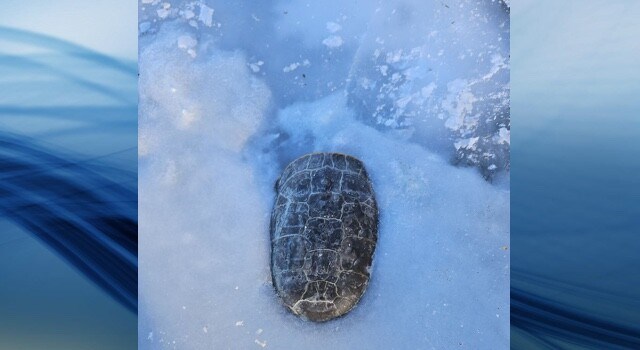Leanna Bomba and her son were walking along the shore of Okanagan Lake close to Vernon's Kin Beach over the weekend when her son called her over for a closer look at something he’d found on the ice.
“It just looked like a clump of dirt at first,” says Bomba, who was saddened by what she saw.
A closer inspection showed a turtle’s shell completely encased in the ice.
Only the shell can be seen from the surface, not the animal's head or limbs.
“Poor little thing must have gotten tossed around last week,” says Bomba who says the turtle was found less than two feet from shore.
Weekend temperatures dipped well below -25 C and wind gusts along the lake were recorded by Environment Canada as being close to 80 km/h, making for intense winter wave action.
Turtles are cold-blooded, and their body temperature is determined by their environment.
Even when ice covers the top of the lake, the bottom where the turtles take their seasonal slumber, isn’t frozen solid.
Wildlife specialist Pete Wise confirms local turtles traditionally hibernate during the winter months by burying themselves into the mud to avoid sub-freezing temperatures.
He couldn't comment on the turtle’s chances of survival, but did say turtles can freeze to death when they are not protected from the elements, especially during extended periods of extreme cold.




